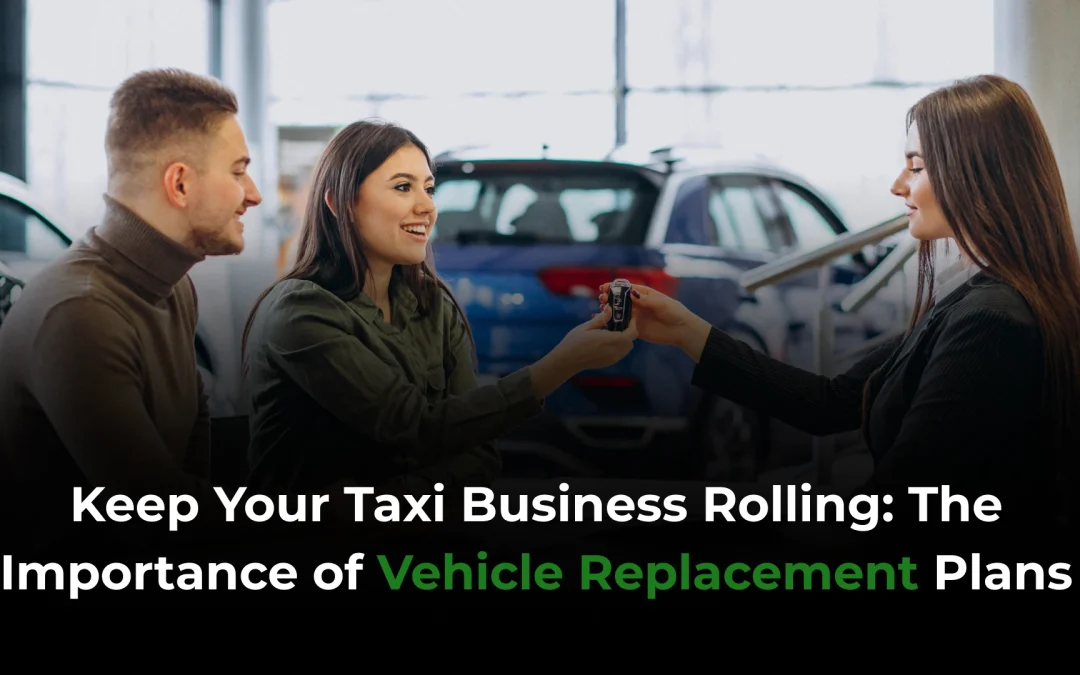Keep Your Taxi Business Rolling: The Importance of Vehicle Replacement Plans
Running a taxi business is more than just picking up passengers and driving them to their destinations. It’s about ensuring your fleet is reliable, cost-effective, and always ready to hit the road. One of the most crucial aspects of maintaining such a fleet is having a solid Vehicle Replacement Cover plans in place.
🛣️ Why Vehicle Replacement Matters
Imagine this: you’re managing a fleet of taxis, and one of them breaks down during peak hours. The repair costs are high, and the downtime affects your revenue. This scenario isn’t uncommon for businesses without a proactive Vehicle Replacement strategy.


📊 Understanding Total Cost of Ownership (TCO)
🧠 Data-Driven Decision Making
In today’s digital age, relying on data is more important than ever. Utilizing fleet management software can provide valuable insights into your vehicles’ performance, helping you make informed replacement decisions.
Key metrics to monitor include:
🔄 Developing a Replacement Strategy
🌱 Embracing Sustainable Practices
Sustainability is becoming increasingly important in the transportation industry. When planning Vehicle Replacements , consider opting for eco-friendly options like electric or hybrid vehicles. These vehicles not only reduce your carbon footprint but can also lead to long-term cost savings through lower fuel and maintenance expenses.
📈 Real-Life Example
Consider the case of a taxi company in Melbourne that implemented a proactive Vehicle Replacement plan. By replacing vehicles every five years based on TCO analysis, they reduced maintenance costs by 20% and improved fuel efficiency by 15%. This approach not only saved money but also enhanced customer satisfaction due to the reliability of their fleet.
🚕 The Hidden Costs of Delaying Vehicle Replacement
Many taxi operators, especially those with long-standing vehicles, often hesitate to replace them due to perceived high upfront costs. However, this delay can lead to escalating expenses in the long run.
Real-Life Scenario: Consider a taxi company operating a fleet of older vehicles. While the initial purchase cost was low, the company faces frequent breakdowns, leading to increased maintenance costs and lost revenue due to downtime. Additionally, these older vehicles consume more fuel, further escalating operational expenses. By delaying replacement, the company inadvertently incurs higher costs than if they had invested in newer, more efficient vehicles.
📊 Strategic Vehicle Replacement: A Data-Driven Approach
🌱 Embracing Sustainable Practices in Vehicle Replacement
Sustainability is becoming increasingly important in the transportation industry. When planning Vehicle Replacements, consider opting for eco-friendly options like electric or hybrid vehicles. These vehicles not only reduce your carbon footprint but can also lead to long-term cost savings through lower fuel and maintenance expenses.
Example: A taxi company in Sydney transitioned to an all-electric fleet. While the initial investment was higher, the company experienced significant savings in fuel costs and maintenance. Moreover, the move enhanced their brand image as an environmentally conscious business, attracting more customers.
🧠 Leveraging Technology for Efficient Fleet Management
💰 Financial Implications of Vehicle Replacement
While replacing vehicles involves upfront costs, the long-term financial benefits often outweigh these initial expenses. Newer vehicles typically offer better fuel efficiency, lower maintenance costs, and higher resale values. Additionally, they can reduce downtime, leading to increased revenue opportunities.
Financial Breakdown:
🛠️ Developing a Comprehensive Vehicle Replacement Plan
A well-structured Vehicle Replacement plan should include:
By following these steps, taxi businesses can ensure a proactive approach to Vehicle Replacement, minimizing costs and maximizing efficiency.
